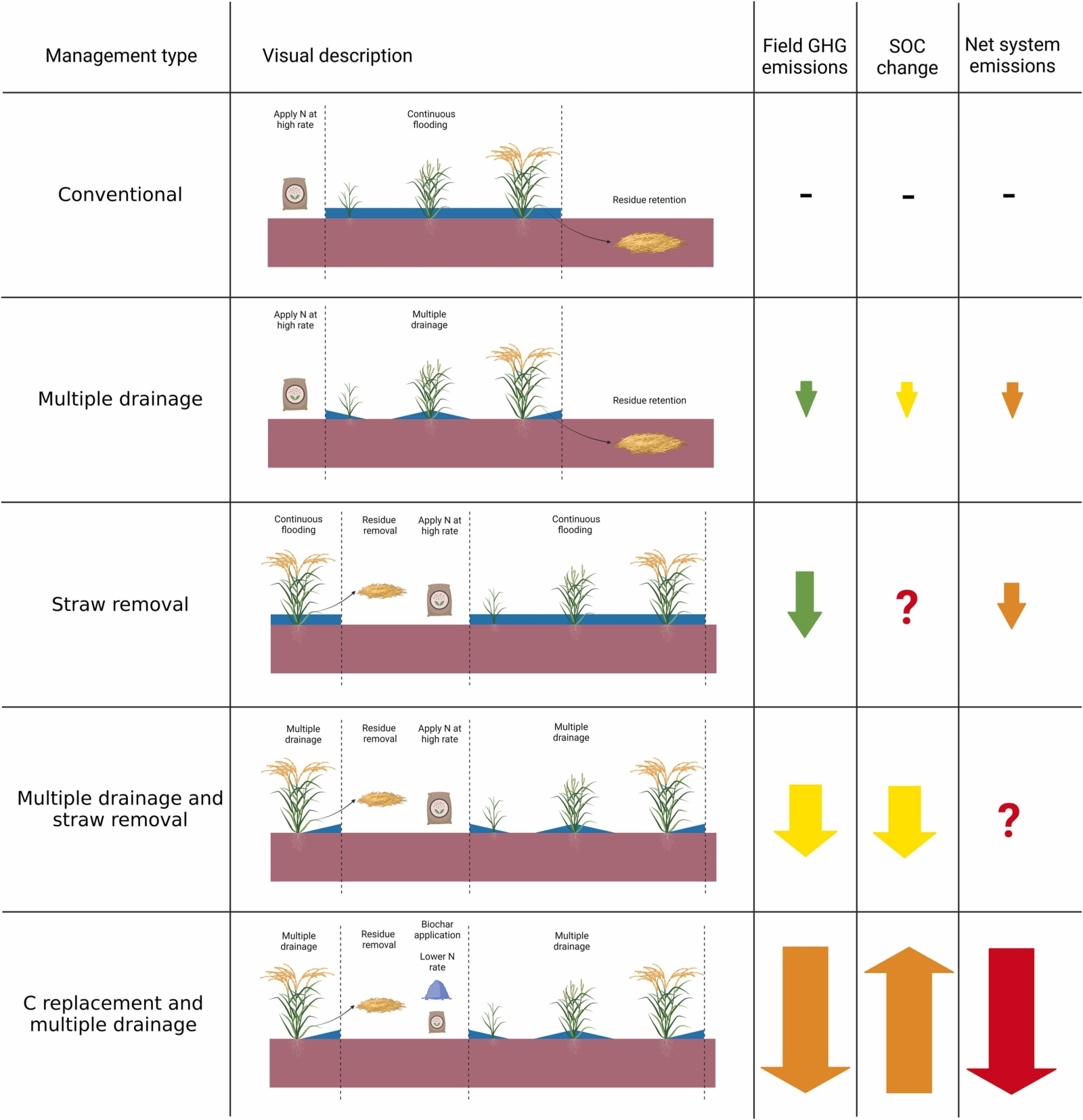February 28, 2024 | Agriculture, Ecosystems & Environment | Source |
Introduction: Southeast Asia (SEA) produces 28% of global rice. As flooded rice fields account for nearly half of global crop-related greenhouse gases, particularly methane (CHâ‚„), climate-smart strategies are urgently needed to enhance productivity, resource efficiency, and environmental sustainability. Despite existing mitigation efforts, integrated approaches addressing system-wide emissions—including soil organic carbon (SOC), energy use, and residue management—remain underexplored. This systematic review, conducted by researchers from the University of California Davis (USA), IRRI (Philippines), and INIA Uruguay, synthesizes scientific evidence across four components using a net system emissions framework. The study assesses cross-component effects and highlights effective mitigation opportunities critical for sustainable rice practices in SEA amidst growing global climate commitments.
Key findings: The study identifies key opportunities for mitigating net GHG emissions in SEA rice production across four components:
- Field GHG Emissions: Effective mitigation strategies include alternate wetting and drying (AWD) irrigation, mid-season drainage, straw removal or burning, and biochar application. These methods significantly reduce CHâ‚„ emissions but may increase nitrous oxide (Nâ‚‚O) emissions or lower SOC, requiring balanced management.
- Energy Inputs: Synthetic nitrogen fertilizers and fossil fuels are major emission sources. Mitigation strategies involve optimized fertilization through site-specific nutrient management, alternative nutrient sources like biochar, and reduced water-intensive irrigation methods such as AWD.
- Residue Utilization: Removing rice straw from fields to prevent open burning significantly reduces GHG emissions. Opportunities include repurposing residues for energy production, such as electricity or bioethanol, which offsets fossil fuel emissions and enhances energy efficiency.
- Soil Organic Carbon (SOC): Practices like biochar application, residue incorporation, and compost enhance SOC stocks, offsetting emissions. Biochar shows significant soil carbon gains, but high application rates may present practical challenges. Long-term research is needed to understand the combined effects of practices like drainage and straw removal.
The review emphasizes the importance of integrated approaches that address cross-component synergies and trade-offs. While field GHG emissions and SOC changes offer the largest mitigation potential, strategies like water and carbon management often involve trade-offs, such as SOC reductions from drainage. Long-term research is crucial to optimize integrated practices, balancing emissions reductions and SOC preservation effectively.

Figure | Conceptual figure summarizing the relative impact of four mitigation strategies (multiple drainage, straw removal, multiple drainage and straw removal, and C replacement and multiple drainage) on the components of field GHG emissions, SOC change, and net system emissions compared to a conventional baseline. A visual description of the scenario is shown together with arrows that show the approximate magnitude (size of arrow), likely directionality, and confidence level of its impact. For visual descriptions with a previous season, it is done so to highlight residue management impacts on emissions in the next season. Downward pointing arrows suggest a decrease in field GHG emissions, a decrease in SOC, and a decrease in net system emissions. The confidence level is shown through color: Green (confident), light yellow (somewhat confident), orange (somewhat confident but with little data supporting), red (somewhat confident but no empirical verification). A question mark shows knowledge gaps large enough that no conclusions can be drawn. This figure was created with BioRender.com.





